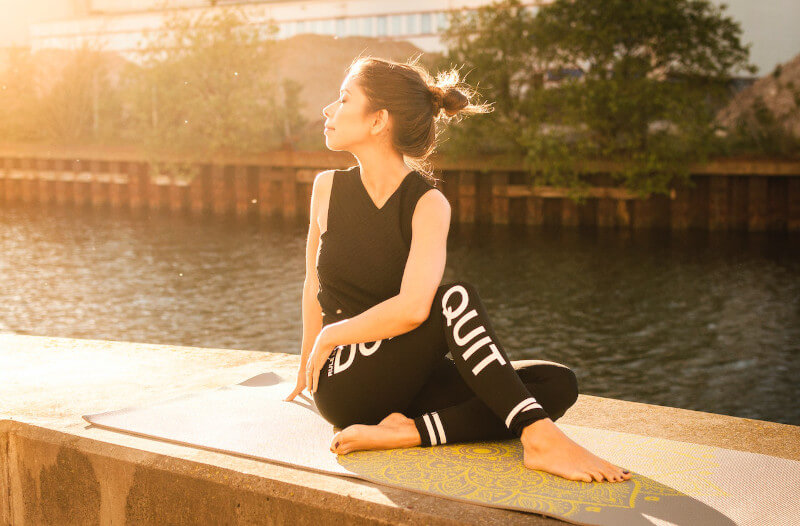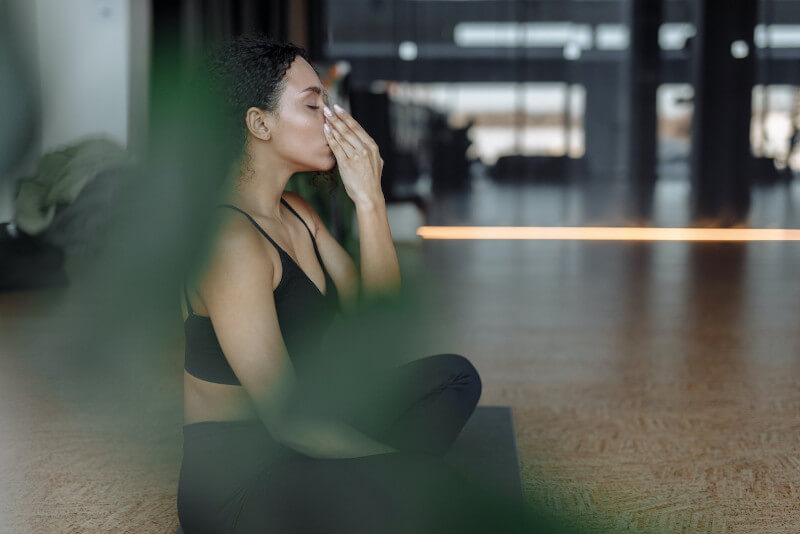There are many different approaches to meditation, and most people can find one that works for them regardless of their character or way of life. Nevertheless, there is no “correct way” to practice meditation, which means that a person is free to experiment with the various approaches until they discover one that is suitable for them.
The term “meditation” refers to a variety of practices that encourage the inclusion of the mind and body. Some require maintaining mental clarity on a sensation, while others require emphasizing awareness of the present moment without passing judgment on anything that is happening there.
In today’s hectic world, where our senses can easily become dulled by the consequences of stress, people meditate to cultivate relaxation and heightened awareness. The majority of the data supporting these claims are provisional; however, studies suggest that meditation might have the ability to enhance physical well-being in addition to mental well-being. The eight practices listed below are among the most common and well-known types of meditation.
Meditation With Loving-kindness for All Beings
Metta meditation is another name for this form of meditation. Its purpose is to encourage the development of a disposition of love and kindness towards anything, including human adversaries and the things that cause them stress.
A person’s mind can become more receptive to loving kindness and compassion when they are deep breathing. After that, they send signals of kindness and compassion to the universe as a whole, specific individuals, or the individuals, they care about most. The key to success in the majority of variations of this meditation is to reiterate the message a great number of times until the individual experiences a mindset of selflessness.
Progressive Muscular Relaxation

When participating in a session of progressive relaxation, practitioners typically begin at one end of their bodies, such as their feet, and gradually build up through the rest of their bodies.
Muscles need to be tensed and then allowed to relax to perform certain types of progressive relaxation. Some people suggest that to relieve tension, a person should try to picture a wave passing over their body.
A state of broad sweeping calmness and relaxation can be facilitated with the help of a technique called progressive relaxation. It is also possible that it will assist with chronic pain. Some individuals discover that practicing this type of meditation before going to bed helps them get a better night’s rest. This is likely because it has a sedative effect on the body.
The Practice of Mindful Meditation
A type of meditation known as mindfulness encourages its practitioners to maintain their awareness and presence in the here and now. Mindfulness motivates an individual to pay attention to their immediate environment, as opposed to ruminating on the events of the past or being anxious about the future. The absence of judgment is essential to this situation. As an illustration, a practitioner will simply take note of the wait without passing judgment on it, rather than ruminating on how frustrating it is to have to wait for a long time.
Meditation on mindful awareness is something that can be practiced pretty much anywhere. For instance, while an individual is waiting patiently in line at the supermarket, they may take the time to mindfully notice their environment, which may include the sights, noises, and smells that they encounter.
The majority of different kinds of meditation entail practicing a type of mindfulness. For example, practitioners of respiration awareness are encouraged to be conscious of their breathing, and practitioners of progressive relaxation are directed to pay attention to places of tension in their bodies. There has been a lot of research done on mindfulness because it is a concept that is present in many different kinds of meditation. According to the findings of some studies, it can:
- Decrease your preoccupation with unhappy feelings.
- Enhance your ability to concentrate, and memory, and control impulsive and emotional responses.
- Raise the level of contentment experienced in relationships.
- Meditation with an emphasis on the breath
One Form of Mindful Meditation is Called Breath Awareness

Those who practice do so while taking slow, deep breaths and tallying their cycles. The objective here is to pay attention only to the act of breathing and to overlook any other thoughts that may come to mind. Breath awareness meditation, which is a type of mindfulness meditation, provides a number of the same rewards as mindfulness meditation overall. These are the ones:
- Reduced stress and anxiety
- Enhanced concentration
- Increased capacity for emotional dexterity
Meditation That is Based on Mantras
The practice of meditating with a mantra entails reciting an assortment of vowel sounds, phrases, or words over and over again, either out loud or in one’s head. Someone can conduct it with or without any religious overtones.
Negative thoughts are redirected and replaced when you use them, which is how it works. According to the findings of a study conducted in 2022, it caused moderate to slight reductions in levels of anxiety, in addition to slight reductions in levels of depression. However, there may be some bias in the studies and a lack of research that makes these findings less reliable.
Transcendental Meditation

People who practice transcendental meditation stay seated throughout the practice and focus on controlling their breathing to achieve a spiritual state. The objective is to advance beyond or to get higher than the person’s existing state of being. An individual should concentrate on a mantra while they are doing a session. If they are collaborating with an instructor, the chant will be chosen by the two of them based on a wide variety of considerations.
Individuals are given the option of selecting their mantra through the use of an alternative version. Although it may appear to be very similar to transcendental meditation, the more modern form of this practice is not technically the correct terminology for the practice. During their meditation, an individual might choose to continue repeating to themselves, “I am not fearful of speaking in public.
An aged clinical study was conducted in 2014 to assess the effectiveness of this type of meditation in forty different instructors. The researchers concluded that it might help lower levels of stress, exhaustion, and depression. However, to validate these findings, additional research is required.
Reduce Stress Using Techniques Based on Mindfulness
Jon Kabat-Zinn created a program called mindfulness-based stress reduction (MBSR) more than three decades ago to help individuals who did not respond well to standard therapies for conditions such as chronic pain and mental illness. The initial training lasted for eight weeks and featured activities such as yoga, abdominal breathing, body scanning, and meditation on the current moment.
The Mindfulness-Based Stress Reduction (MBSR) program requires participants to complete assignments at home, such as maintaining a gratitude journal or a log of positive events. Based on an older study that was published in 2014, scientists discovered that individuals who took part in MBSR rated considerably better on psychological evaluations and encountered substantially less pain.
Meditation With a Guide

Many different kinds of meditation can be directed by the voice of a guide, which can either be a real person or a recording of a real person’s voice. This is in contrast to other types of self-guided meditation, in which a person directs their meditation using their thoughts.
Someone may use meditation practice for their mindfulness or MBSR practice. Individuals who are just getting started with meditation might find it helpful, to begin with, some kind of guide. It’s possible to get a live tour guide when you go with a group, but you can also get a recording of the tour through video content, webcasts, apps, and audio recordings.

